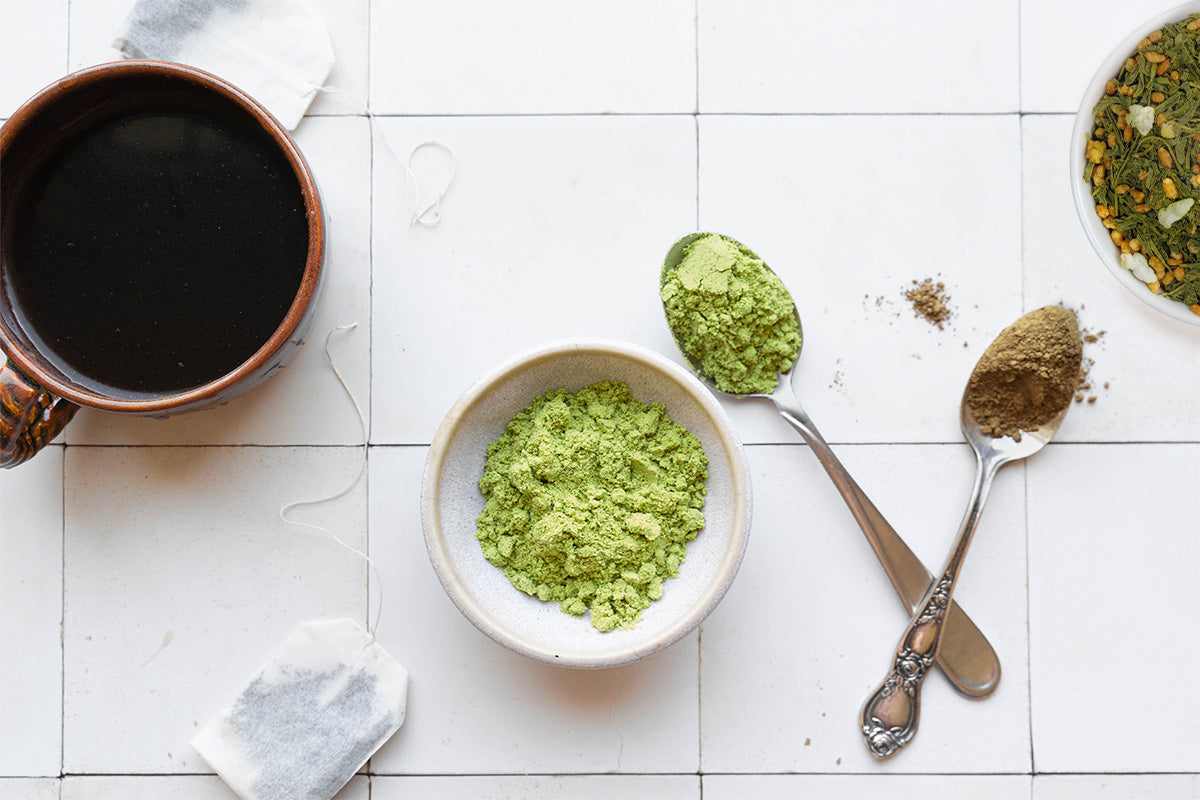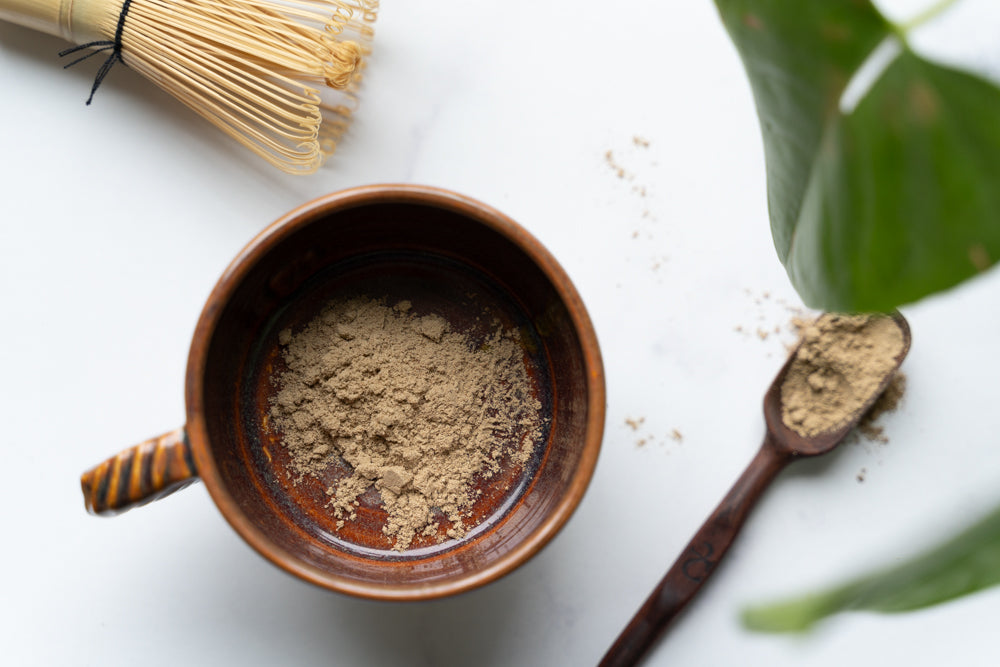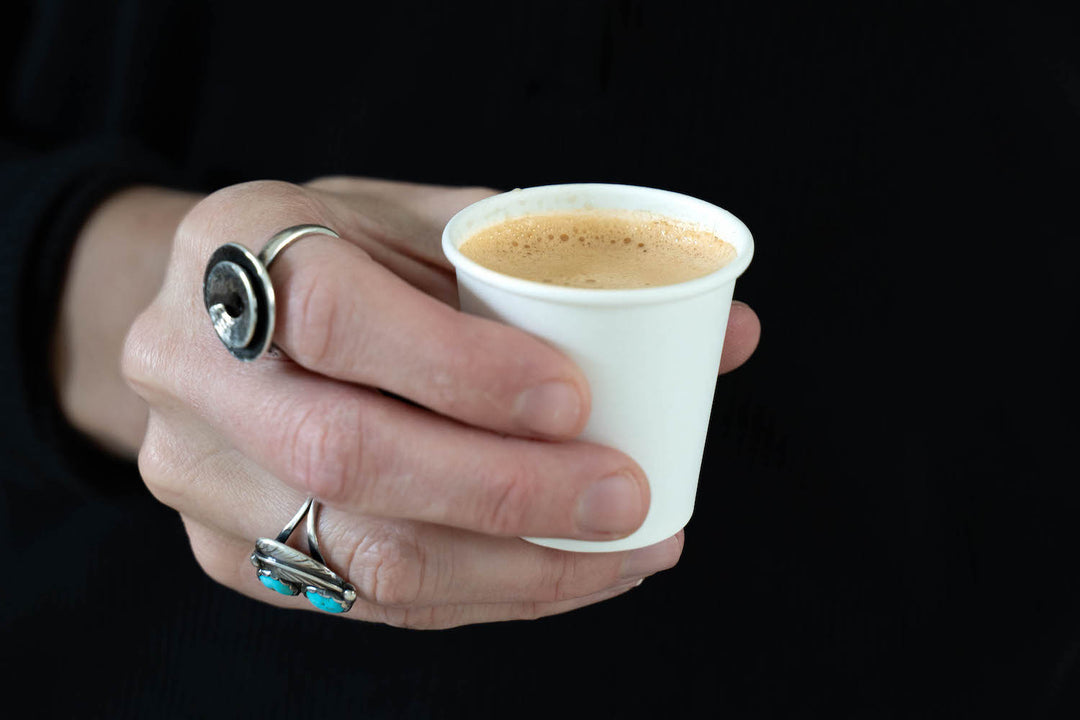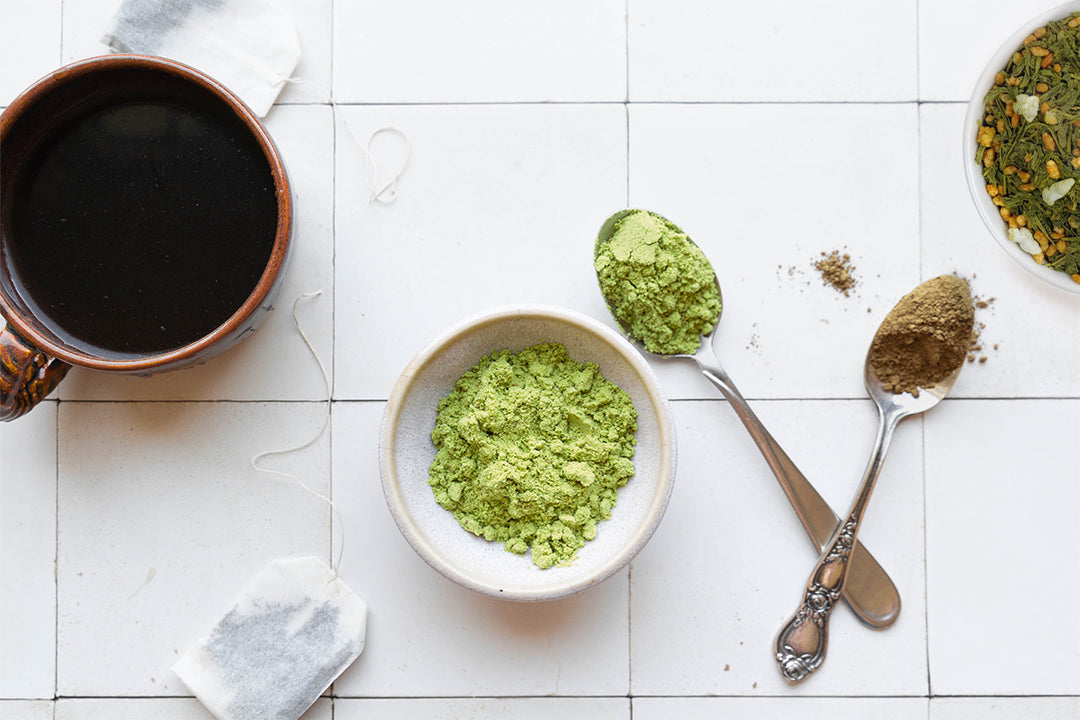The Definitive Guide to Japanese Tea Varieties

It is said that the Buddhist monk Bodhidharma traveled from India to China in order to practice and teach Dharma, the precursor to what is known as the art of Zen in Japan today. While living at the Shaolin monastery, he embarked on a nine year meditation in search of spiritual enlightenment.
He meditated for so long, staring at a cave wall, he burned not only holes into the surface of the rock with his eyes but his shadow left a permanent impression in the stone. However, furious with his inability to stay awake for the entirety of those nine long years, he cut off his own eyelids and threw them in the dirt. It’s in that very spot that the first tea plant is rumored to have grown.
A Brief History of Japanese Tea
As far as what can be documented, the first known record of tea in Japan was in the 8th century. It is thought to have been brought to Japan from China by diplomats and traders, where it quickly gained favor with Buddhist monks. It was these monks that are credited with first cultivating tea in Japan. The monks valued the tea for its stimulating effects because it helped them maintain concentration and consciousness during long meditations, something Bodhidharma might have sympathized with.
From there tea quickly began to gain favor not just with monks, but with the ruling class. It was sought after by emperors, aristocrats, intellectuals, and even Samurai warriors. Demand for tea began to grow and its availability climbed steadily with it. Somewhere between 1200-1400 it was being consumed consistently by everyday people, and there is even a record of it being purchased with regularity at street markets.
Then, sometime between the mid 1600s to the mid 1800s when Japan had entrenched itself in isolationism, Japanese tea began to develop its own distinct identity. Cut off from the rest of the world, Japanese tea growers and processors started to develop their own practices and traditions. These traditions echo tea’s Chinese roots but have become undeniably and distinctly Japanese. As these unique ways of both growing and preparing tea began to take hold, the Japanese tea culture that we know today started to take form.
Popular Types of Japanese Tea
All Japanese teas come from the same plant, Camellia sinensis. The differences in tea comes down to how it is grown, where it is grown, and how it is processed after harvest.
Just like any agricultural product, the flavor of tea is greatly impacted by its growing conditions like soil, sunlight, rainfall, and other environmental factors. It’s these conditions coupled with distinct differences in preparation that make the different Japanese tea varieties so unique.
Sencha

Sencha is by far the most popular and widely consumed tea in Japan and is a staple in many homes. It’s made from unshaded first-flush leaves that are immediately steamed to help prevent oxidation.
There are two types of Sencha that come out of the steaming process; regular Sencha and Fukamushi Sencha, which is steamed much longer, producing a deeper green and less astringent tea that can be brewed more quickly.
After steaming, the leaves are rolled out, dried, and then rolled again into the needle-like shape that is typical of the variety. Sencha tea can express in a wide range of flavor profiles. Some of the commonly associated flavors include grassy, kiwi, sweet, astringent, kale, brussel sprouts, spinach, and even butternut notes.
Matcha

The tea plants used to grow matcha grade tea are usually one of three specific varieties of Camellia sinensis. Sunlight to these plants is increasingly blocked as they near time for harvest. This process increases chlorophyll production, giving the matcha a more vibrant green color and increasing the amino acid content. Most notably, it increases L-Theanine, an amino acid known for creating a calming effect when ingested. It also concentrates glutamate molecules, which translate to a distinct umami taste.
Only the smallest, youngest and most delicate leaves are harvested, then steamed in a way much like sencha to lock in flavor and slow degradation. Next, the leaves are dried and sorted by grade. These pre-ground leaves are known as tencha and are kept under climate control until they are ready to be ground. Matcha translates to “ground tea” and the grinding process is very laborious, but in the end produces an extremely fine powder that virtually dissolves during preparation.
Matcha has a distinct earthy profile that is combined with a sweet vegital nuttiness. It is pleasantly grassy with a slight bitterness. Matcha is both sweet and savory and tends to finish with a hint of umami.
Hojicha

Probably the most distinctive Japanese green tea is Hojicha, as it is no longer green in appearance. Hojicha is simply the delicious roasted version of its still-green cousins, made mostly from the same leaves used to make sencha.
Hojicha is thought to have come to prominence in the 1920s when a tea merchant was looking for a way to make use of his more mature green tea leaves as well as the discarded leaves and twigs from sorting. After some investigating and research, he found that roasting the surplus tea slowly over charcoal gave it a sweet and smoky profile and a pleasant reddish brown color when brewed. There is some evidence to suggest that roasted green tea was made before this, but not enough to confidently say that Hojicha predates this origin story.
The taste of Hojicha is reminiscent of Matcha in its very light grassiness, but the flavor is much deeper and richer. It has a smooth roasted chocolate flavor with an underlying nuttyness. One might even describe it as a coffee-adjacent in its flavor.
Genmaicha
Genmaicha, or brown rice tea, is just that, green tea mixed with brown rice. It’s also known as popcorn tea as the rice has been roasted and popped. Traditionally, Genmaicha was made with leaves from the Bancha variety, a lesser grade leaf that was cheaper. Today however, it often uses the same leaves used to make sencha.
The tea leaves are processed and then combined often in equal parts with toasted rice. Mochi rice is traditionally used and yields the best quality tea. Before blending the rice is soaked, steamed, dried, roasted and then cooled. The toasted/popped rice is then combined with the tea leaves.
Due to that fact Genmaicha is often half rice, it tends to have a sweet, warm, nutty, and buttery flavor. Tea drinkers often describe it as having a fuller body because of the added sugar and starch content from the rice. The tea has even been described as having faint caramel notes.
Originally a cheaper tea option for the masses as the rice was seen as a filler, today Genmaicha is a very popular beverage enjoyed by people of all economic means.
Gyokuro
Gyokuro is often regarded as the pinnacle of Japanese tea. Much like in the process of making Matcha, the tea leaves are shaded before harvesting resulting in vibrant and flavorful leaves. However, the lack of sunlight halts the growth of the plant so much that the yield is very limited.
Additionally, Gyokuru is made with only the first leaves of the early spring harvest, making it of even shorter supply. The young leaves are hand picked and processed much in the same way as other green teas, steaming them and then drying and rolling them. However, only the most prized leaves make the cut to become Gyokuro tea.
Gyokuro tea is also different in that it has three times the levels of catechins and theanine as well as significantly higher levels of caffeine. The flavor profile is described as sweet and savory, brothy and even salty with high levels of umami. It also has a much rounder and heavier mouthfeel, making it feel more like broth or miso.
Today’s Tea Culture in Japan
Japanese tea culture has largely been defined by its elegant and ritualistic tea ceremonies. These ceremonies embrace the ideas of harmony, purity, tranquility, and respect and have traditionally followed a specific set of customary steps, each embedded with deep symbolism and meaning.
The traditional tea ceremony shares a close relationship with the philosophy of Wabi-Sabi and its awareness of the transient nature of things. The ceremony is meant to acknowledge and show appreciation for simplicity, imperfection, and meditate on the impermanence of the world.
Today however, the traditional tea ceremony is not as prevalent in the everyday life of Japanese people; though the act of drinking green tea is still very much commonplace. Traditional ceremonies can still be found in authentic tea rooms, however, day-to-day tea consumption has changed quite a bit.
In today’s Japan it’s increasingly common to drink tea in more quick and convenient forms. Options range from ready-to-drink products found in vending machines to more modern tea rooms with an atmosphere more akin to what one might find in a coffee house, with at most a brief homage to the traditional ceremony being conducted. Regardless of these changes, one thing is for sure, and that is that tea is still a vital and vibrant part of life in Japan. The influence of Japanese tea has and continues to spread across the planet.



Leave a comment